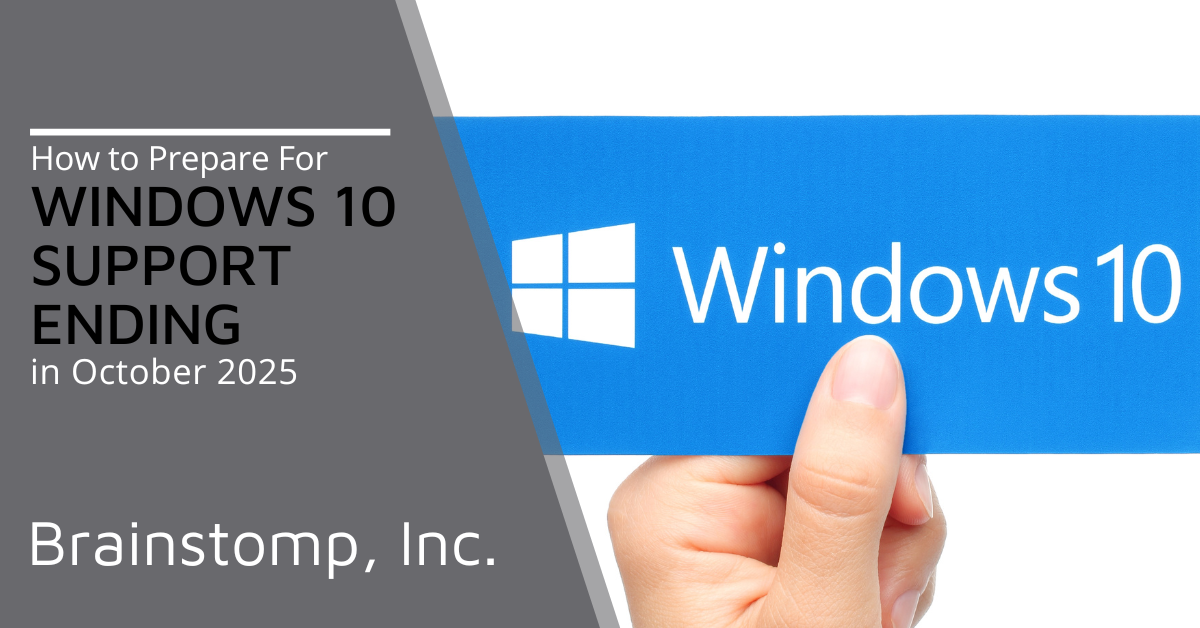How to Prepare For Windows 10 Support Ending in October 2025
/As we approach the end of support for Windows 10 in October 2025, many users and organizations are beginning to consider their options and plan for the future. This significant milestone in the Windows operating system lifecycle will have far-reaching implications for millions of users worldwide. In this article, we'll explore what the end of support means, why it's important, and how you can prepare for this transition to ensure your systems remain secure and up-to-date.
What does "end of support" mean for Windows 10?
When Microsoft announces the end of support for an operating system, it means that the company will no longer provide security updates, bug fixes, or technical assistance for that particular version. For Windows 10, this date is set for October 14, 2025. After this point, continuing to use Windows 10 could expose your computer to security risks and compatibility issues with newer software and hardware.
The end of support doesn't mean that Windows 10 will suddenly stop working. Your computer will still function, but it will become increasingly vulnerable to new security threats and may struggle to run the latest applications or work with new devices. Next, we’ll discuss why this change is important for users.
Why is this change important?
Staying updated on the latest Windows software is important for many reasons, from security to convenience. Let’s discuss some of the main points that make upgrading in October a necessity:
Security risks
One of the most critical reasons to pay attention to the end of support is the increased security risk. Without regular security updates, your system becomes more vulnerable to malware, viruses, and other cyber threats. Hackers often target outdated systems, knowing that they are no longer receiving patches for newly discovered vulnerabilities.
Compatibility issues
As time goes on, software developers and hardware manufacturers will focus on creating products compatible with the latest operating systems. This means that new applications, drivers, and devices may not work properly or at all with Windows 10 after its support ends.
Compliance concerns
For businesses and organizations, using an unsupported operating system can lead to compliance issues. Many industry regulations require the use of up-to-date and supported software to maintain data security and privacy standards.
What are your options as Windows 10 support ends?
While it’s true Windows 10 support is ending soon, it’s not over for users. You have a few options to switch before October 2025. Let’s discuss the details:
Upgrade to Windows 11
The most straightforward option for many users will be to upgrade to Windows 11. This latest version of Windows offers improved security features, a refreshed user interface, and better performance on modern hardware. However, it's important to note that not all computers currently running Windows 10 will be compatible with Windows 11 due to its stricter hardware requirements.
Consider alternative operating systems
If your hardware doesn't meet the requirements for Windows 11, you might want to explore alternative operating systems. Linux distributions like Ubuntu or Mint can breathe new life into older hardware and provide a secure, modern computing experience.
Upgrade your hardware
For those with older computers, the end of Windows 10 support might be the perfect time to invest in new hardware. This ensures compatibility with Windows 11 and can provide significant performance improvements.
How to Prepare For the Transition to Windows 11
Transitioning to Windows 11 doesn’t have to be complex or scary. There are a few simple steps you can take to make the change easier.
Check your system compatibility
Start by checking if your current system is compatible with Windows 11. Microsoft provides a PC Health Check app that can quickly assess your computer's compatibility. If your system isn't compatible, you'll need to consider your other options.
Backup your data
Regardless of which path you choose, it's crucial to back up all your important data. This includes documents, photos, videos, and any other files you can't afford to lose. Consider using cloud storage services or external hard drives for this purpose.
Plan for software compatibility
Take inventory of the software you use regularly and check if it's compatible with Windows 11 or your chosen alternative. Some older applications may not work on newer operating systems, so you might need to find replacements or updated versions.
Consider professional assistance
If you're managing multiple computers or a business network, it might be worth seeking professional IT support to plan and execute your transition strategy. They can help assess your current setup, recommend the best course of action, and assist with the migration process.
Ready to Leave Windows 10 Behind?
As we approach the end of Windows 10 support, it's crucial to start planning your next steps now. Whether you're an individual user or managing a large organization, the transition away from Windows 10 requires careful consideration and preparation. At BrainStomp, we understand the challenges this change can bring, and we're here to help you navigate this transition smoothly.
Our team of experts can assess your current setup, recommend the best course of action, and provide the support you need to ensure your systems remain secure and efficient beyond October 2025. Don't wait until the last minute – contact us today to start planning your Windows 10 transition strategy. Together, we can turn this challenge into an opportunity to modernize and improve your computing experience.


